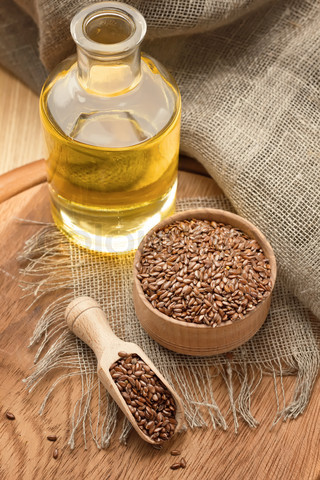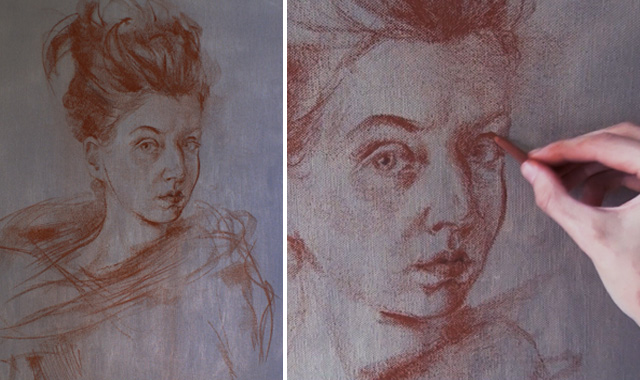On 29 Sep, 2012 With
Oil painting materials Oil Paints Oil paint is a mix of a powdered pigment bounded with a medium of drying oil. Linseed oil is commonly used as a carrier in oil paint. Oil paints can be mixed with linseed oil as a medium to make paints more fluid; this medium also increases glossiness and makes paint more transparent. Linseed oil comes as cold pressed, alkali refined, sun bleached, sun thickened, and polymerised (stand oil). Traditionally, the old masters used to prepare oil paints themselves. Today, ready-made oil paints available in tubes from any art supply shop. It is possible to paint with oils without diluting them with solvents, by using brush pressure to spread the paint out thinly. In…
Read More
On 22 Sep, 2012 With
Oil painting techniques Introduction Welcome to the Web Art Academy Club! We are fine art teachers Natalie Richy and Vladimir London, and have created the Web Art Academy for fine art students who want to learn traditional oil painting and drawing techniques. The fine art video lessons presented in the Club are valuable for both beginning and advanced students. If you have just recently started your fine art education, this course would be very helpful to obtain a good understanding of oil painting methods. If you already have knowledge and experience in painting, this course would still provide many advanced know-how strategies you could use to improve your painting techniques. You will discover what oil painting…
Read More
On 17 Oct, 2011 With
Techniques of printmaking (etching) as a fine art Etching is part of the intaglio family (along with engraving, drypoint, mezzotint, and aquatint.) The process is believed to have been invented by Daniel Hopfer (circa 1470-1536) of Augsburg, Germany, who decorated armour in this way, and applied the method to printmaking. Etching soon came to challenge engraving as the most popular printmaking medium. Its great advantage was that, unlike engraving which requires special skill in metalworking, etching is relatively easy to learn for an artist trained in drawing. Etching prints are generally linear and often contain fine detail and contours. Lines can vary from smooth to sketchy. An etching is opposite of a woodcut in that the raised portions of an…
Read More
On 2 Aug, 2011 With
This Video Lesson presents an example of making two drawings in which you will learn how to draw relying on unique lose strokes only. You will be able to create your drawings fast, freshly, impressive, emotionally fulfilled and reminding the etching effect. Such technique is great for both preparatory sketches and finished artworks. Video is based on two drawings made by Natalie Richy. No one really knows when art or drawing really began. Humans supposedly made sketches and painting in the early years. Cave Paintings are a good example. People have made rock and cavedrawings since prehistoric times. By the 12th-13th centuries AD, monks were preparing illuminated manuscripts on vellum or parchment in monasteries throughout Europe were using lead styli to draw lines for their writings…
Read More
On 29 Jul, 2011 With
Part 2 The beginning of this article The technique used is quite laborious, involving small circular or oval strokes with a sanguine pencil. If you have ever worked in lithography, you may notice that drawing with wax sanguine on the paper and using a lithography pencil on the lithography stone gives the same feeling of the surface. This is because the viscosity of pencils and the circular movements are similar, whether working in wax sanguine or doing lithography. The circular pencil movements are best suited for when the surface needs to be evenly filled in. The pressure of the sanguine pencil should be varied. The more gentle the pressure, the lighter the result. In the shadow places, more pressure should be applied. Layer…
Read More
On 28 Jul, 2011 With
Join the Club to view this Video Lesson » Part 1 This Video Lesson presents the drawing with sanguine. It demonstrates how to capture effects of light and shadow on a drawing of antique bas-relief sculpture. How to use sanguine and white chalk on toned paper. This exercise of sanguine drawingwill improve your drawing experience and skills of depicting 3-demensional objects on flat surface of toned paper. In this video we are going to make a study of a fragment of the Parthenon sculpture in sanguine technique. We begin with transferring the drawing outline and finish with the white chalk highlighting. For the Parthenon sculpture study we have chosen a good quality, unevenly tinted thick paper, which is very similar…
Read More
On 26 Jul, 2011 With
This Video Lesson presents an example of making two drawings in which you will learn how to draw relying on unique lose strokes only. You will be able to create your drawings fast, freshly, impressive, emotionally fulfilled and reminding the etching effect. Such technique is great for both preparatory sketches and finished artworks. Video is based on two drawings made by Natalie Richy. Here is another good example of portrait drawing where you can achieve great results with a minimalist approach. This drawing is done in the same style as the previous one. Graphite drawing techniques are virtually endless. Any way that you choose to apply graphite to a surface will produce some sort of interesting result. To begin with,…
Read More
On 24 Jul, 2011 With
In this video lesson you will discover how to create very effective artworks with minimal means. Good quality paper is essential for this kind of artwork. Ideally, paper should be strong enough to take a sharp graphite pencil and it should also be eraser resistant. You can search your art supplies shop for paper that is suitable for drawing, in the required size. Don’t be tempted to replace drawing paper with watercolour or sketching paper, even if you like the surface texture. Watercolour paper is not as resistant to a rubber eraser as smooth drawing paper is. We have chosen a 42x 59 cm sheet of paper for a reason. A portrait of the character with a face measuring 9…
Read More
On 17 Dec, 2010 With
A graphic is an original work of art made in two steps. First, the artist creates a prepared surface with the art design or image; and secondly, that image is inked and transferred directly to paper using the force of a press to push the sheet of art paper firmly against the inked surface that contains the prepared image. An original graphic is sometimes referred to as a print, not to be confused with an inexpensively produced reproduction (which is a copy of a work of art that was originally created in another medium). The forms of prints (or original graphics) that are most common are intaglios such as etchings, engravings, linoleum and wood block prints, and the planographic medium…
Read More
On 21 Jun, 2010 With
Drawing clothing can be quite challenging. The challenge usually centers on the drawing of the folds. There is a lot of reflected light, lots of darks, and many lights. But it is exactly this variety of values that makes the drawing of clothes very attractive but also challenging. Learning to draw fabric well requires a concerted effort and a good deal of practice. Here are a few tips to memorize: * Folds – There are five types of folds we must recognize when drawing clothing: 1. The column fold 2. The drape fold 3. The inert fold 4. The coil fold 5. The interlocking fold Of course, in a typical situation, more than one of these fold types are present….
Read More



